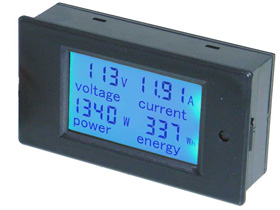I am building a removable battery pack for my van RV (it gets much hotter than is conducive to a long battery life here in Phoenix and I want to be able to store the battery in an air conditioned space in the summer when not using the van). To make this less of a a pain in the rear to do, I built a 200A battery disconnect switch and a 100ohm, 12.5W resistor into my battery pack. The switch has two marked positions. Precharge (open) and Run (closed). I have a circuit breaker elsewhere that I can use if I ever need to manual disconnect the battery without having to unplug it.
Process to follow before plugging the battery into the inverter (Multiplus 24/2000):
- Turn off the inverter.
- Set the switch to the precharge position.
- Wait 10 seconds.
- Set the switch to run position.
- Turn on the inverter.
Even if I turn on the inverter with the battery switch in the precharge position nothing bad will happen. The inverter will turn itself off when the supply voltage drops below the low voltage disconnect threshold, but even if it didn't happen, the resistor is sized so that it won't smoke even if the positive output of the battery pack is shorted to ground (the resistor would be dissipating 6W of heat which it can do continuously). There is a 175A fuse built into the battery (plus the 150A BMS) to take care of a shorted output with the switch in the run position.
I am using this chassis mount resistor. It only costs $3. I am bolting it to one of the water cooled chill plates so heat dissipation should not be an issue.
Order today, ships today. RH010100R0FE02 – 100 Ohms ±1% 12.5W Wirewound Chassis Mount Resistor from Vishay Dale. Pricing and Availability on millions of electronic components from Digi-Key Electronics.

www.digikey.com
Attached is a copy of my latest system drawing. The battery precharge circuit is on page 2.



